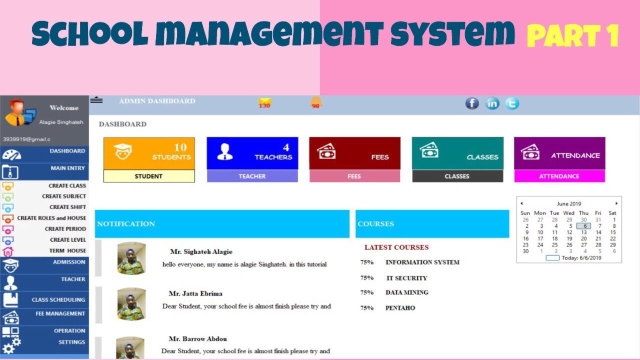Building a successful studio business requires more than just technical expertise and artistic talent. A crucial element for lasting success lies in the seamless harmony between studio management and client relationships. Studio owners and creative professionals who excel in both areas understand the importance of effective communication, efficient project coordination, and exceptional customer service.
Studio management encompasses a wide range of tasks, from overseeing daily operations to maintaining a productive and inspiring work environment. Implementing a powerful CRM (Customer Relationship Management) system can streamline these processes, allowing studio managers to automate workflows, track interactions with clients, and organize project details all in one place. By leveraging a CRM, studio owners can focus their energy on nurturing client relationships and fostering an environment that promotes creativity and collaboration.
Equally important is mastering the art of client management. A satisfied and engaged clientele not only ensures a steady flow of projects but also opens doors to invaluable word-of-mouth referrals. Effective client management involves understanding their unique needs and maintaining clear and open lines of communication throughout every stage of a project. Additionally, implementing efficient invoicing systems helps ensure prompt payments, fostering a positive relationship built on trust and professionalism.
Finding the perfect balance between studio management and client management is key to thriving in the creative industry. By adopting the right tools and processes, studio owners can create an environment that supports both artistic excellence and the utmost client satisfaction, ultimately leading to long-term success and growth. So, let’s dive deeper into the various strategies and techniques that can help you master this delicate art of studio and client harmony.
Streamlining Studio Operations
A well-run studio is essential for delivering high-quality services to clients. By streamlining studio operations, businesses can improve efficiency, reduce costs, and ensure a smoother workflow. In this section, we will explore three key strategies for achieving harmonious studio management.
- Implementing a CRM System:

A Customer Relationship Management (CRM) system is an invaluable tool for studio management. By centralizing client information, project details, and communication history, studios can easily access and track relevant data. A CRM system allows for effective client management by organizing contact information, providing a record of past interactions, and enabling efficient communication. With a CRM system in place, studios can ensure that client needs are met, deadlines are adhered to, and projects stay on track.
- Automating Invoicing and Payment Processes:
Invoicing and payment collection can be time-consuming and prone to errors. However, by implementing an automated system, studios can streamline these processes and improve cash flow management. With invoicing software, studios can generate professional invoices, automate payment reminders, and track payment statuses. Automating invoicing not only reduces administrative effort but also ensures timely and accurate payments, leading to better client satisfaction and financial stability for the studio.
- Leveraging Project Management Tools:
Efficient project management is crucial for harmonious studio operations. Project management tools provide a centralized platform for planning, tracking progress, and collaborating with team members. Studios can assign tasks, set deadlines, and monitor milestone achievements, ensuring that projects are delivered on time and within budget. Project management tools also facilitate effective communication among team members, reducing the risk of miscommunication and improving overall project efficiency.
By implementing these strategies, studios can streamline their operations, enhance client satisfaction, and ultimately achieve greater success in managing studio and client harmony.
Effective Client Communication
Maintaining effective communication with clients is crucial for a successful studio-client relationship. Clear and timely communication helps establish trust and ensures that both parties are aligned in their goals and expectations. Here are three key strategies to enhance client communication:
Active Listening: Listening attentively to clients is vital in understanding their specific needs and requirements. Take the time to actively listen to their concerns, ideas, and feedback. This not only demonstrates your commitment to their project but also enables you to provide tailored solutions. By acknowledging their input and engaging in active dialogue, you can foster a sense of collaboration, making the client feel valued and heard.
Timely Updates: Providing regular updates is essential for keeping clients informed about the progress of their project. Whether it’s through email, phone calls, or project management tools, ensure you communicate milestones, timelines, and any potential roadblocks. This allows for transparency and helps manage expectations. Promptly addressing any concerns or questions that arise further demonstrates your commitment to open communication and client satisfaction.
Approachable Attitude: Adopting an approachable and friendly demeanor can go a long way in building strong client relationships. Encourage clients to reach out when needed and make yourself readily available to address their queries or provide support. Being responsive, polite, and respectful in all interactions creates an atmosphere of trust and mutual respect.
Remember, effective client communication is a continuous process that requires active participation from both parties. By prioritizing open dialogue, attentive listening, and prompt updates, you can foster a harmonious working relationship and set the stage for successful collaboration.
Optimizing Financial Management
Request A Demo
In order to create a seamless and successful studio-client relationship, it is crucial to optimize financial management. Effectively managing finances not only ensures a healthy cash flow but also builds trust and credibility with clients. Here are three key strategies to help maximize your financial management:
Streamline your CRM and Studio Management Tools
Utilizing a Customer Relationship Management (CRM) system tailored to your studio’s needs can greatly simplify financial management. A CRM can track client interactions, store project details, and automate invoicing processes. By integrating your CRM with studio management tools, you can easily generate invoices, monitor payment statuses, and keep track of project budgets in real-time. This streamlining process minimizes the risk of errors and ensures efficient financial management.Transparent Invoicing and Clear Payment Terms
Implementing a transparent invoicing system is essential for maintaining a healthy studio-client harmony. Clearly communicate your payment terms upfront, including payment due dates, payment methods, and any potential late fees. Regularly send detailed invoices that clearly itemize the services provided and the corresponding costs. This transparency not only boosts client satisfaction but also reduces misunderstandings or disputes related to payments.Regular Financial Reporting and Analysis
To optimize financial management, it is vital to regularly analyze your studio’s financial performance. Generate detailed financial reports that provide insights into revenue, expenses, profit margins, and client profitability. These reports can help identify areas of improvement, such as cost-saving opportunities or potential revenue streams. By actively monitoring and analyzing your studio’s financial health, you can make informed decisions to enhance financial stability and client management.
By implementing these strategies, you can ensure that your studio and clients are on the same page when it comes to financial management. Streamlining processes, maintaining transparency, and conducting regular financial analysis will contribute to a harmonious working relationship and pave the way for long-term success.


